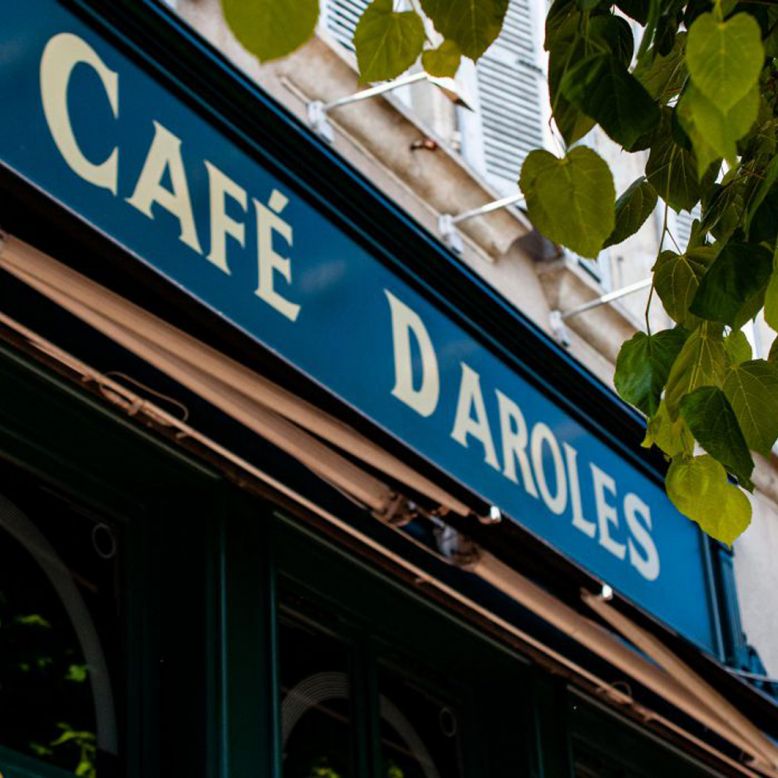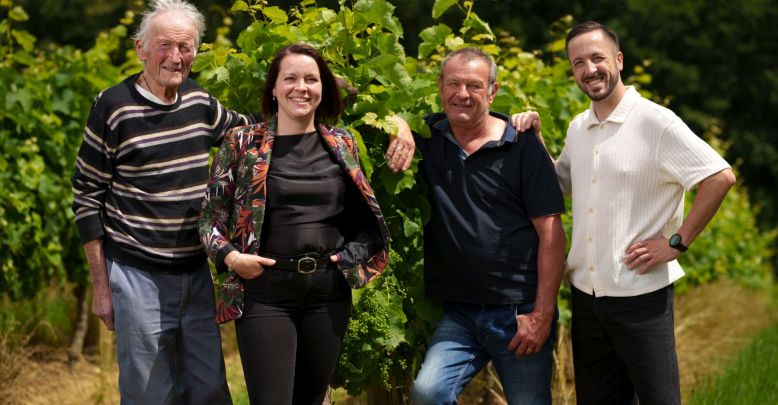- Home page
- Tourism
- Tasting
- Gastronomy, specialties and local products
- Tasting
- Tourism
Gastronomy, specialties and local products
The gastronomy in the Gers is exceptional in its quality and quantity. Local products and specialities have unrivalled flavours like foie-gras, confits of duck, duck fillets, rillettes, chicken, melons, white garlic, kiwis... Listing all the products famous in the area is mouth watering, even without seeing any food! Why does this department have so many delicacies? There is imagination in food preparation and so many wines, aperitifs and digestives to serve with them. Did you know that the Gers is the subject of a great mystery, especially for the Anglo-Saxons, who called it the "French Paradoxe"? In the Gers, we enjoy all the great food produced and remain very healthy. Gascony is a territory where the inhabitants have few cardio-vascular diseases: the Gersois reach a ripe old age while enjoying the great pleasure of eating.
So then… “A table” for a tour of flavours, with your Guide du Gers!
To learn how to cook these products, visit our article on the Gers’ recipes.
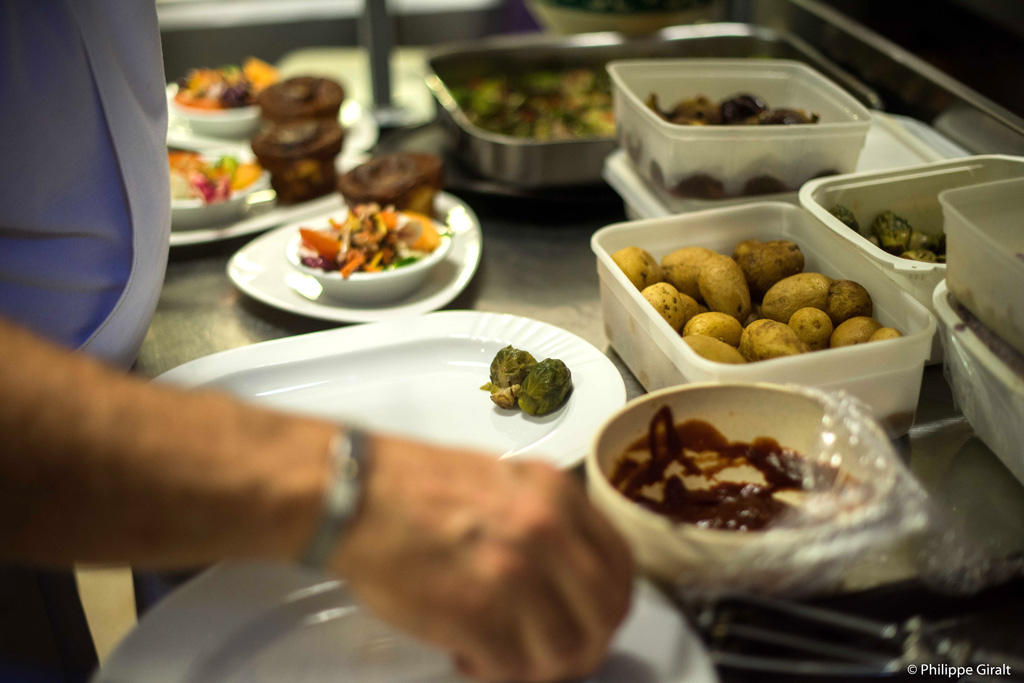
The Gers, a land of gastronomy.
sponsored content
THE GERS, THE LAND OF “GRAS” (FAT)
The statement “the Gers is a land of fat” offends no one, on the contrary it is celebrated in many ways. When the autumn and cooler weather arrives, from November to March, it is the season of the traditional “Marchés au Gras” (duck and goose products markets). They are everywhere, but especially in the east of the department. Coded, precise and even sometimes ruthless... the producers bring kilos of prepared foie-gras, poultry carcasses, whole poultry and sometimes live poultry to market. Prices are whispered; quantities are ordered but not disclosed... It is quite surprising to see, especially at the end of the year where it beats all records with the Christmas festivities. But what can you find in the “Marchés au Gras of the Gers?
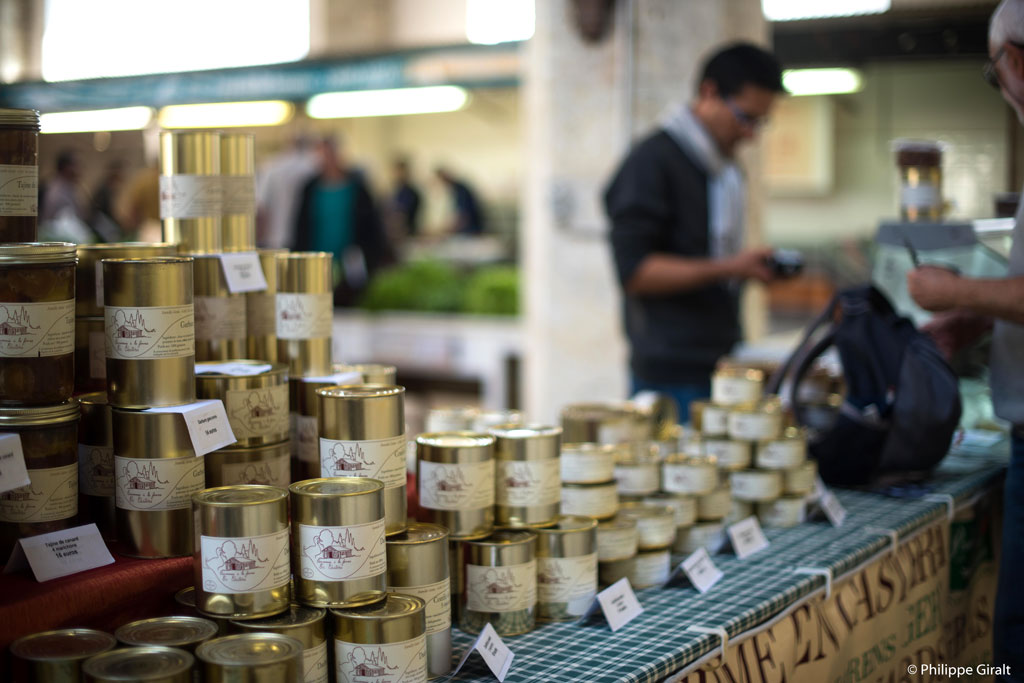
“Marchés au gras” (duck and goose markets) in the Gers
FOIE GRAS
Foie-gras, which is made from goose or duck liver, is the emblem of French gastronomy. Their nutritional content (fatty-acids, vitamins) are identical, but how they are digested have characteristic differences. Goose foie-gras is the oldest, most traditional. Foie-gras with a fine, delicate flavour. It is silky and refined. Duck foie-gras, which is also excellent, is more rustic. It has a distinctive taste and character.
Both are delicious and which you choose is a matter of taste. From their appearance, goose foie- gras is bigger and reduces less during cooking. Duck foie-gras is appetizing with a beautiful creaminess.
The foie-gras of the Gers are especially delicious; the poultry are bred in the traditional way. They are free range and corn-fed. The foie-gras can be consumed raw, cooked in a pan, cooked or half-cooked. There are many recipes to be found from using it for a starter, right through to using it in desserts. Most food lovers prefer if simply on toast.
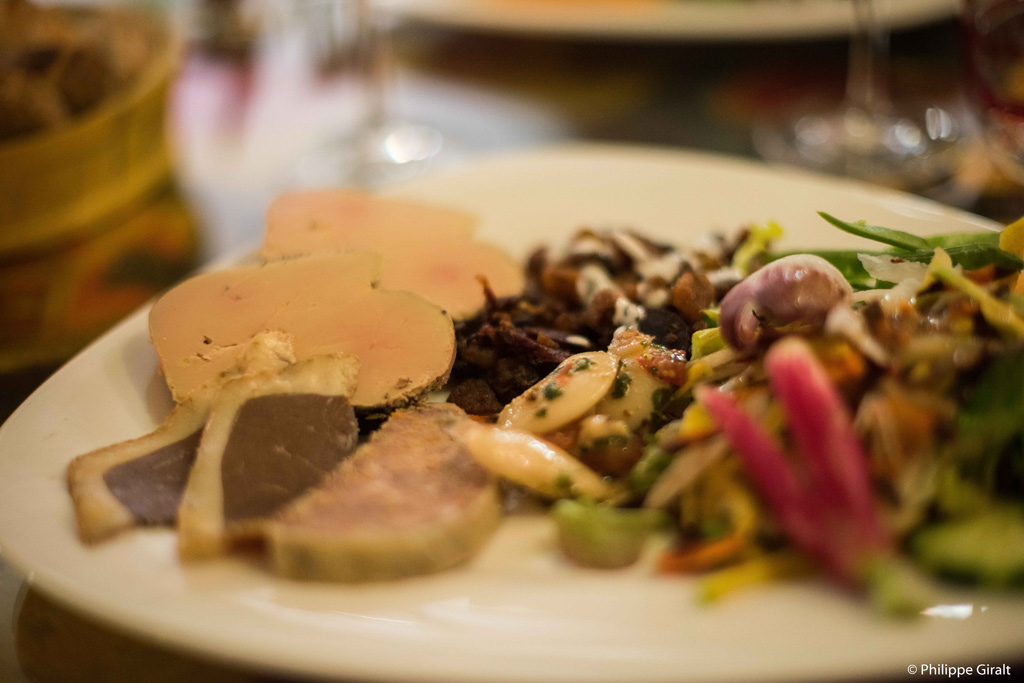
Foie-gras in the Gers
poultry of the GERS
In Gascony, poultry is reared humanely. Cooks use all parts of the duck, for example: they make foie-gras, use duck slivers, duck fillets, confit, duck wings, legs, neck, the carcass (for soup) and even the fat. Everything is used for making delicious and innovative dishes. The poultry farms of the Gers are famous and the poultry very tasty.
On market stalls you can find:
- Yellow chickens, typical of the area. The flesh just melts in your mouth. Black chickens have a slight taste of walnut. White chickens have a delicate taste with fine, tender flesh.
- Turkey has soft flesh.
- Guinea fowl has a pronounced taste.
- Poulard, a domestic fowl with a fine, tender taste is perfect for celebration meals.
- Capon, a neutered male chicken or guinea fowl which has tender, marbled flesh.
The Gers is also a land where you find game. It can sometimes be found on market stalls or in farm shops; there are quail, woodpigeon, woodcock and partridge. They are best cooked in a casserole or stew, with beautiful local wine used in the sauce!
The Gers tradition of rearing poultry is as old as land cultivation, as they often go hand in hand. Farmers kept poultry in their farmyards to feed the family as well as growing a variety of crops for sale. The farmers then developed poultry rearing for trade and then for tourism.
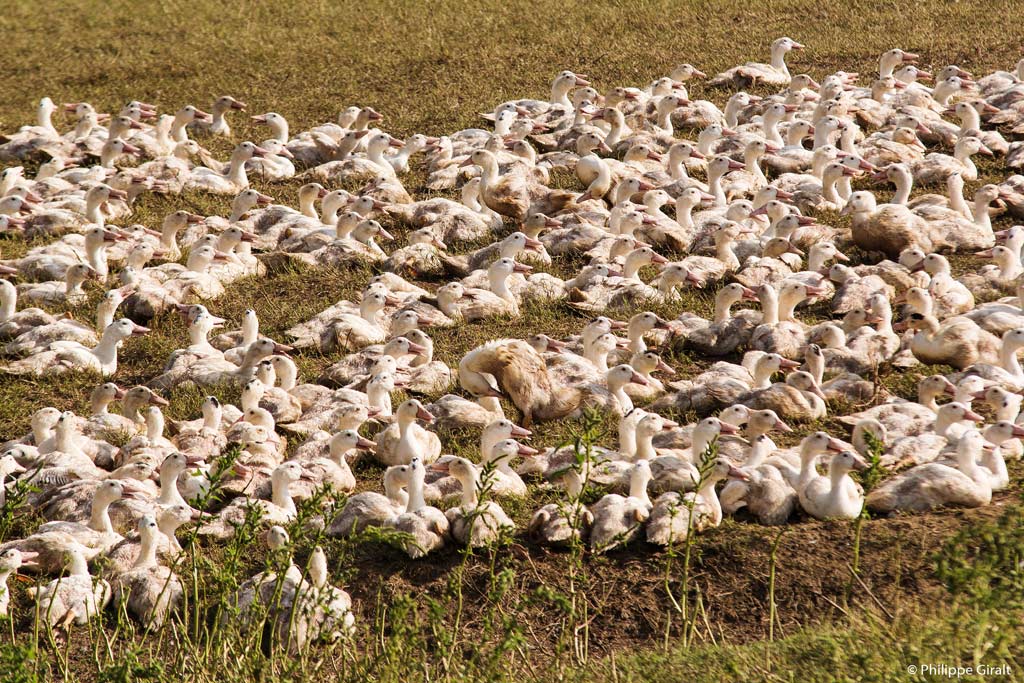
Poultry of the Gers, here are some geese in Montesquiou.
LE GERS, Land of farming and rivers
Animal husbandry in the Gers does not stop with poultry! There is also Gascony beef, veal, lamb and Gascon black pork. If you would rather have fish, you can find fresh water fish and even caviar!
sponsored content
GASCONY BEEF
The “Gascony” is a breed of cow that hascharacter, like the inhabitants of this land! This cow is hardy, adapted to the local climate and landscapes. It is also a very low maintenance breed. You can see the herds grazing in the fields. Their hides are light with silver reflections and they have inward pointing horns. The farmers' ancestors used this powerful animal for pulling. Today, its tender, juicy, dense meat is popular for its taste; it melts in the mouth and has a lightly marbled flesh.
There is a lot of space in the Gers and Gascony beef lives outdoors at least 6 months of the year, thanks to the good weather conditions. Fed with care, between pasture and hay, it guarantees the quality of this animal, whose flesh is full of Omega 3 and 6.
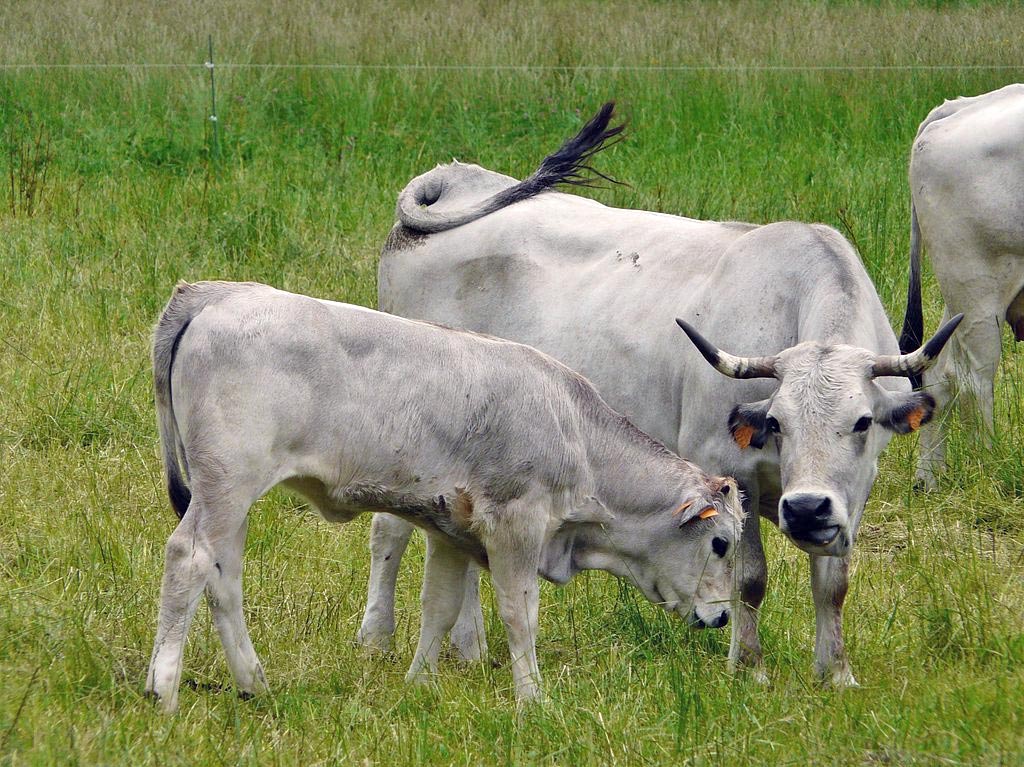
A Gascony cow - Photo by Père Igor under licence CC-BY-SA
farmED lamb of the gers
Sheep and lambs are part of the traditional Gascony and Gersois landscape. There is a tradition of transhumance in the Gers. The lambs are fed by their mothers and eat cereals as well. The lambs raised in the open air produce tender, tasty meat.
ROSÉ veal of the GERS
Veal production of the Gers is booming! It comes under the heading of the Blonde d'Aquitaine, Limousine or Charolaise breeds... The calves produced in the Gers are born and raised in the department. The calf stays with his mother and drinks her milk (veal "under the mother"), which guarantees an animal in good health which has been well cared for. You can find veal dishes in the restaurants and butchers of the Gers, at a reasonable price. It is readily available.
Colombo, blanquette, stew... the veal of the Gers can be used in all these dishes.
sponsored content
GASCON BLack pork
Meatand quality charcuterie is also produced in the Gers! The black pork of Gascony, with which the black ham is made, melts in the mouth. It has a subtle yet strong flavour and is totally delicious...
It is an attractive black animal, 100% Gascon! It is also called the Black Pork of Bigorre, when raised at this location. It is a hardy animal, well adapted to the local area and weather conditions. It has a curious and sociable temperament. It is fed on cereals, acorns and chestnuts.
To appreciate the taste, producers recommend cooking it in hot oil to seal in the juices, which crystalize on the top of the meat, while protecting the juice within the piece.
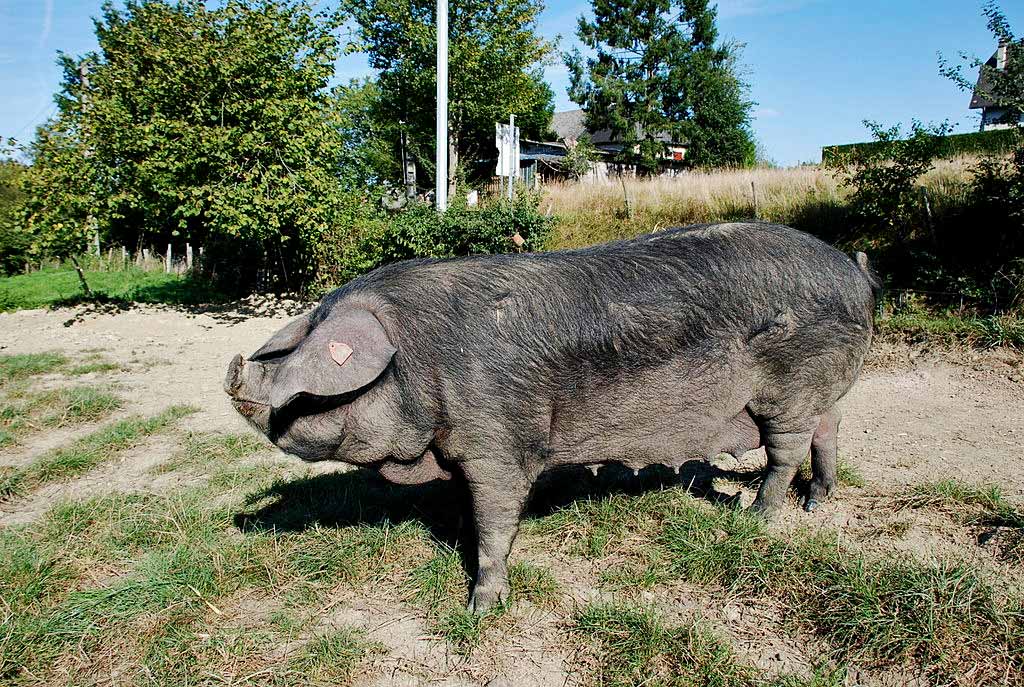
The Gascon Black Pork- Photo from Darreenvt under licence CC-BY-SA
the GERS and its fish
In the Gers, we obviously eat fish, thanks to the fishmongers bringing a variety of seafood from the sea which is not that far away.
Good freshwater fish is available as fishermen catch fish from the Gers and Adour rivers. There are rich fishing waters in the whole department. There are many lakes where one can fish; it is a good family hobby. Check regulations with the Fédération de Pêche du Gers (fr).
What can you catch in the Gers? Trout, salmon, carnivorous fish such as pike, pikeperch, perch and black-bass, white fish...
In Riscle, with a little bit of luck and a bit of money, you may be able to buy a box of precious, sought-after caviar from the Prunier House. The sturgeon of the Adour River are pampered to ensure the production of high quality caviar which is mainly exported or already reserved for the greatest French Restaurants.
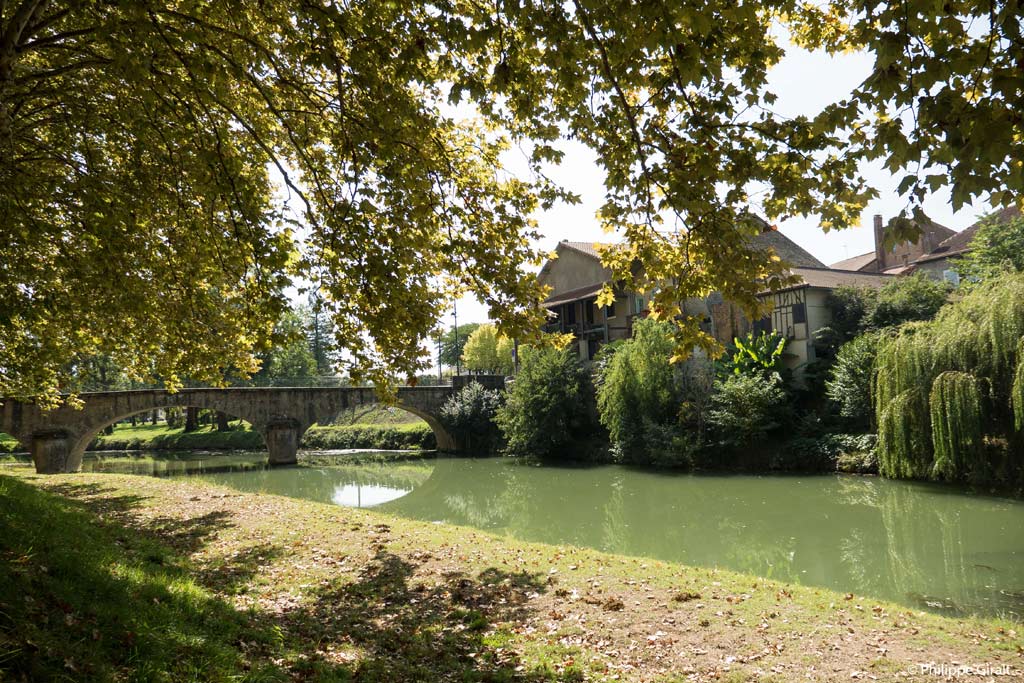
The Rivers of the Gers, here in Plaisance
vegetables and FRUIT of the GERS
garlic of the gers
The white garlic of Lomagne (fr) thrives in the soil of this region. It is quite big in size, fleshy and perfumed, sometimes with purple strips. It can be found on market stalls during the second half of the year, from July to December. It is sold in plaited strings, singly or in bags... Since 1950s, the producers meet to standardize theproduction, to maintain the quality of the garlic.
The purple garlic of Cadours (fr) is purple on the outside (a very pronounced colour), and sometimes on the inside too. It is large, but remains uniform in size. It tastes spicy with a hint of sweetness.
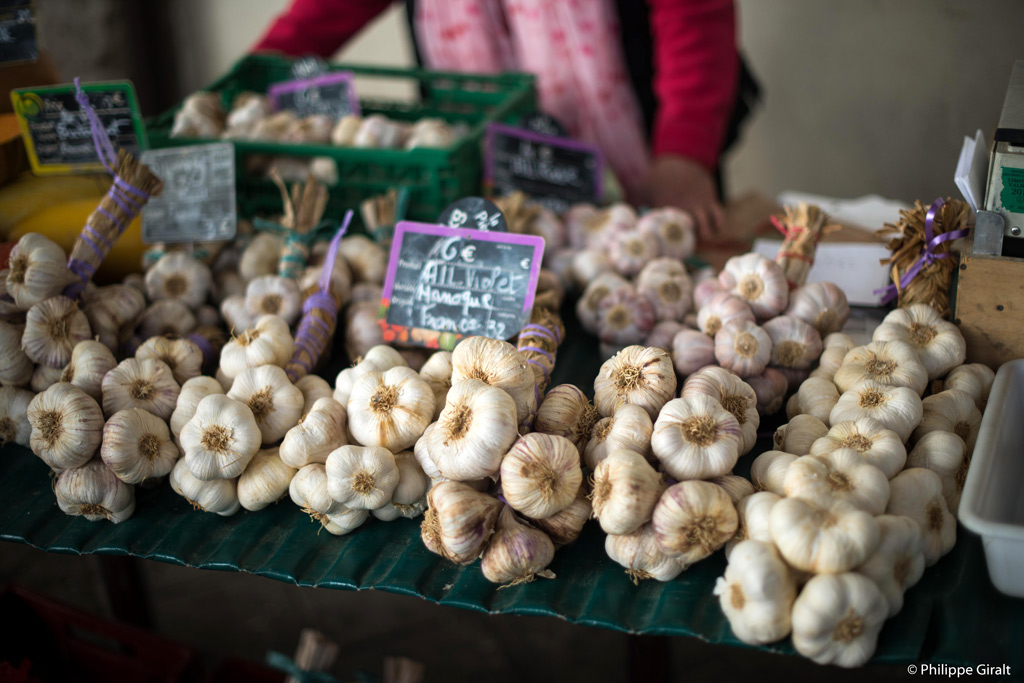
The essential condiment of the Gers cuisine, garlic!
The TARBAIS bean
In the south and the southwest of the Gers, from Riscle to Masseube, the Tarbais bean is produced. It is a white bean, with a fine skin, a soft flesh and it melts in the mouth. It is sown in the middle of spring and the pods are harvested by hand at the end of August/beginning of September or later if the beans are going to be dried.
the ADOUR kiwi
The Adour kiwi (fr) represents a quarter of the national production of kiwi fruit. The exceptional weather conditions in this part of France, as well as the rich alluvial soil of the Adour basin are favourable for growing this high quality, tasty kiwi, rich in vitamin C, magnesium and fibre. It has a tangy taste, and it is better to eat it when it is a bit firm because once it goes soft it loses its tangy taste. It is best served with sweet food, but it also goes well with seafood (crab, smoked salmon, prawns...).
the LECTOURE melon
The clay-limestone soil is good for growing vines, and it is also good for growing melons! Since 1850, in Lectoure, melons have been produced. The sunshine gives them their sweetness and taste... The Charente Melon is harvested from June to mid-September, depending on the weather. It is best served with a Floc de Gascogne wine and dry cured ham.
other products of the GERSOIS AREA
At the markets and farm shops you can find cheese, especially goat's cheese and cow's cheese, Agen prunes and honey, pears, apples... and saffron!
OUR CITY GUIDES IN EUROPE

